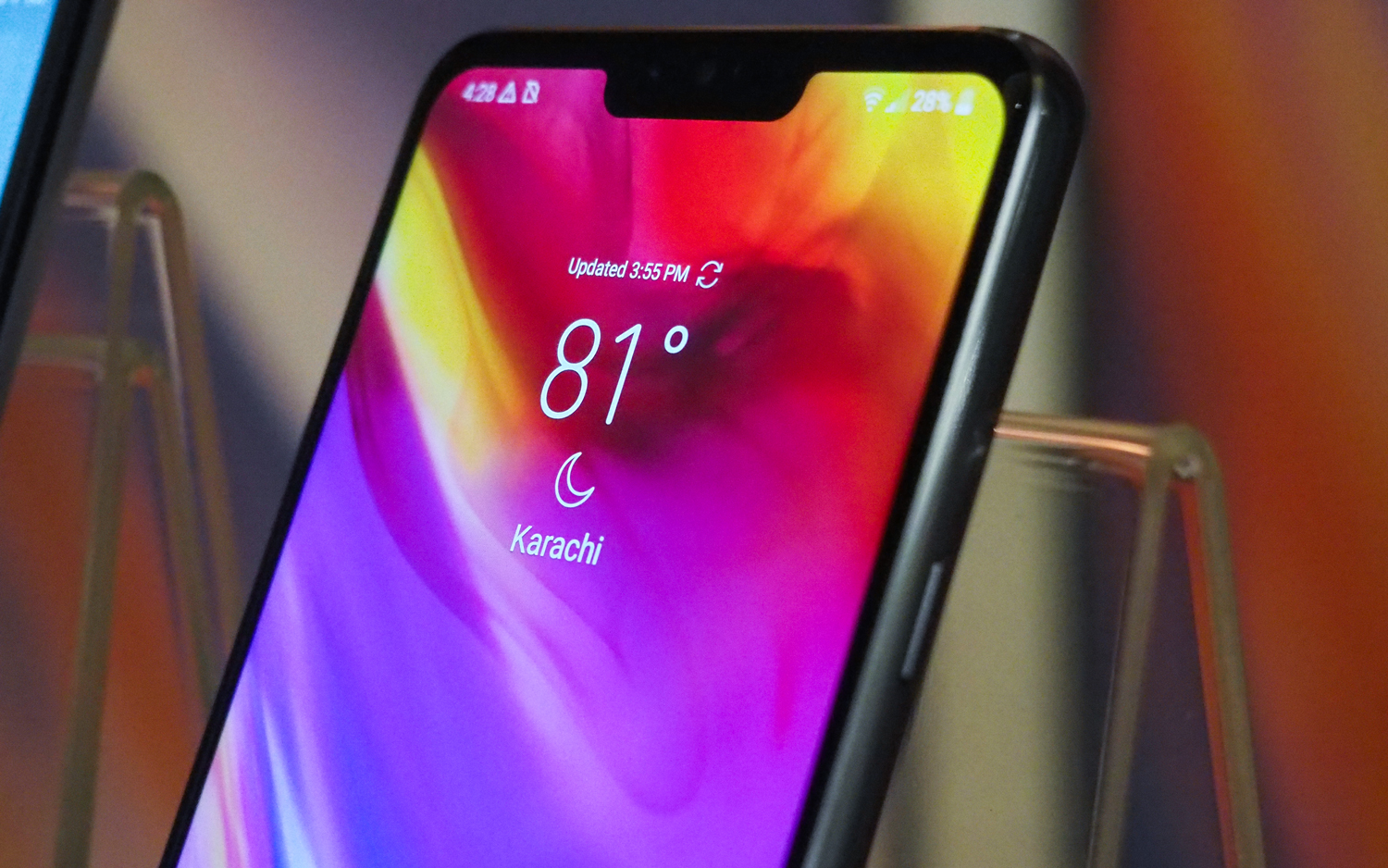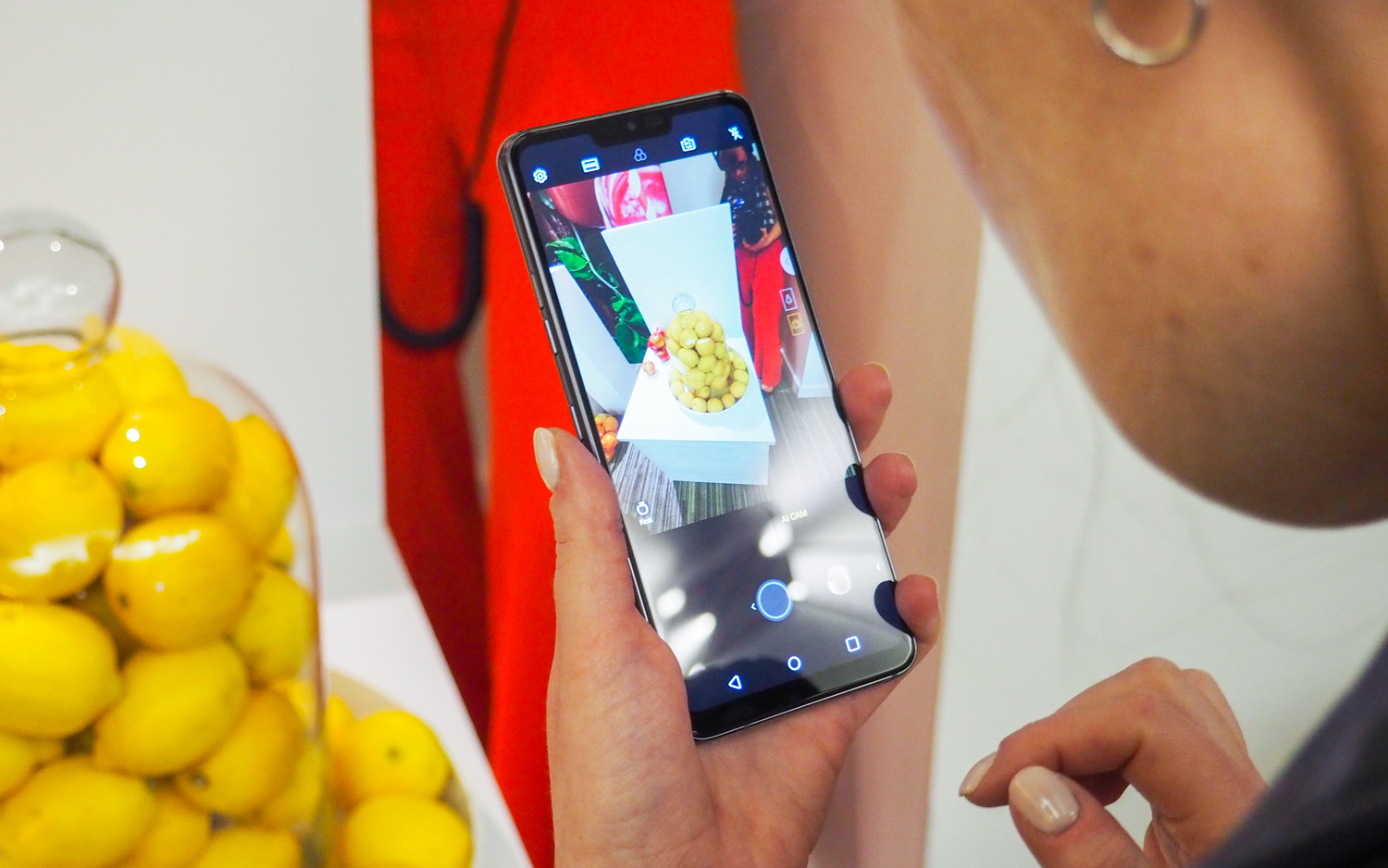LG Bets on Notch, AI for Desperately Needed Phone Win
Can the new G7 ThinQ live up to its high expectations? LG sounds off on how it's trying to stand out.
You might look at the front of the LG G7 ThinQ and see a notch similar to the one on Apple's iPhone X. But Frank Lee, director of public relations for LG's mobile division, sees the first step toward a bezel-less phone with nothing but screen up front.
"This is meant as a stepping stone to where we can maximize the display further," Lee said prior to today's unveiling of LG's latest flagship phone. "I think we're just on the cusp of being able to do that."

LG's phone division has fallen on hard times. In fact, LG Mobile has posted just one quarter of profitability over the past two years, and it cited “a challenging marketplace and strong competition from Chinese brands” after issuing its Q4 20017 results in January. Can LG really compete with the likes of the Galaxy S9 and iPhone X?
MORE: LG G7 ThinQ Hands-On: iPhone X Style with a Super-Smart Camera
The company's ambitious thinking for the G7 ThinQ shows that LG is looking beyond producing just another Android phone and aiming to introduce some big changes to the look and feel of phones, even if those changes come gradually.
Take that notch at the top of the 6.1-inch G7's screen, which is sure to be elicit divided opinions from smartphone fans. Given the iPhone X's impact on the smartphone market — it wasn't the first phone with a notched display, but it certainly has been the most successful — it might be tempting to lump the G7 in with a slew of other iPhone clones that will hit the market in 2018. Lee said that LG's inspiration for the display came from within.
By giving users the option to fill up the space on either side of the G7's notch with notifications, LG is "leveraging some of the insights we had from our second screen on the V10 and V20," Lee said. Those two phones featured a dedicated section of the display where you could access recently opened apps or control commonly used settings without having to muck around through a lot of menus. When Tom's Guide reviewed the V20 nearly two years ago, we called its second screen one of the most useful and practical features added to a smartphone at the time.
Sign up to get the BEST of Tom's Guide direct to your inbox.
Get instant access to breaking news, the hottest reviews, great deals and helpful tips.
"It had some shortcuts that were unique to that space, and other [users] just enjoyed the heightened real estate," Lee said of the second screen feature on those older phones. "So [with the G7], we're just going to push all the notifications into the shoulders, and free up the space for your content.
"We're committed to making sure that when you buy an LG product, an LG smartphone, that it gets better with age." - Frank Lee, director of public relations for LG mobile
Taking cues from the V series phones for its G series lineup is consistent with how LG approaches mobile, Lee said.
"V allows us proof of concept for some of the innovations or new technologies that we're playing with," he added. "What happens now is that some of those capabilities are further fine-tuned and brought on to the G. And G is just really trying to make it more available to a broader audience of people."
"With the [V30], we had these pretty technical capabilities like the Cine Log. That's still available, but we're really showcasing AI cam in the space of photography [with the G7]. So it's easy. You're going to get better pictures out of this, more creative photos, without having to dig deep into the settings. G is meant to deliver all the learnings and also some of the capabilities that V introduces."

LG differentiates between the two phone lines in other ways. Last fall's LG V30 features an OLED screen. When the G7 ThinQ hits retail shelves soon, it'll have an LCD panel.
"LG has a leadership in both [display types]. and we felt that wanted to bring an alternative into the market," Lee said of the decision to give the G7 an LCD screen. "If you prefer OLED, then you have the V30 available to you. And we wanted to do something a little more different based on the G6 platform."
The G7 arrives in a very tricky smartphone market that — rightly or wrongly — tends to be seen as one made up of Apple, Samsung and everybody else. So how does LG break out of that "everybody else" group, and can the G7 be the phone that helps the company do it?
"One of the things we need to do to disrupt, to set us apart and to gain that momentum [is] we're committed to make sure that people feel when you buy an LG product, an LG smartphone, that it gets better with age," Lee said. The company added AI features to the camera of the V30 via a software update — features that are at the center of the G7's camera, incidentally — and it plans to be just as proactive with feature-adding updates for its latest phone.
"The AI package that we released last month [for the V30] is exactly the result of the vision that our CTO and the company has around the added value that happens post-purchase," Lee said. "And we're always honing in on practical innovation, making sure a feature, a performance capability, it still speaks to something where you get the benefit."
Image Credits: Tom's Guide
Philip Michaels is a Managing Editor at Tom's Guide. He's been covering personal technology since 1999 and was in the building when Steve Jobs showed off the iPhone for the first time. He's been evaluating smartphones since that first iPhone debuted in 2007, and he's been following phone carriers and smartphone plans since 2015. He has strong opinions about Apple, the Oakland Athletics, old movies and proper butchery techniques. Follow him at @PhilipMichaels.

